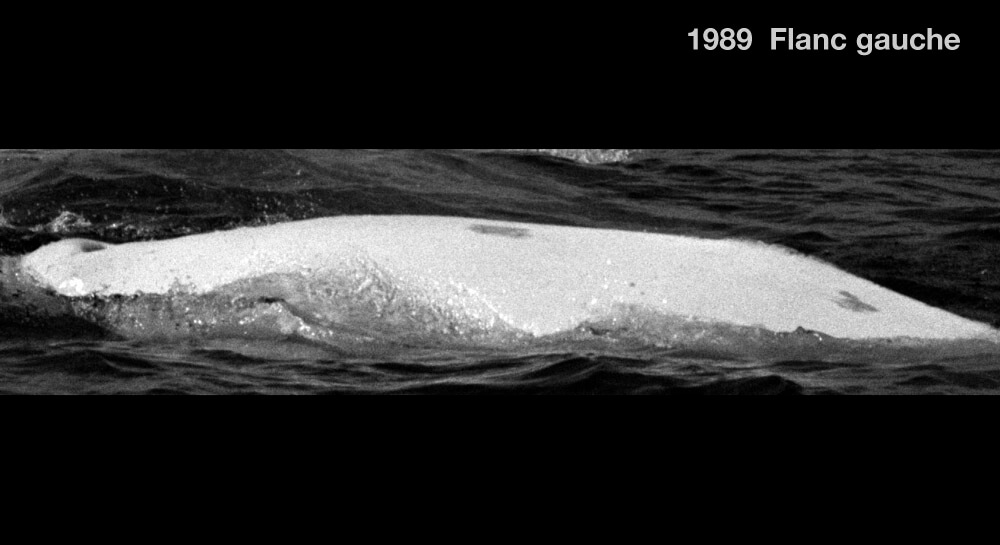Frimas
Beluga


Adopted by parc national de Miguasha visitors and parc national du Fjord-du-Saguenay visitors
-
ID number
DL0094
-
Sex
Male
-
Year of birth
Before 1977
-
Known Since
1989
Distinctive traits
Frimas is distinguished by his two elongated gray spots on the left flank, one below the crest and the other in front of it. His dorsal crest features one large and several medium and small notches.
Life history
Frimas was first observed in 1989. His “coat” was already immaculate white. He was therefore born before 1977.
His large size, habits and social affiliations clearly indicate that Frimas is a male. He belongs to one of the two male networks in the Saguenay.
Frimas belongs to the St. Lawrence beluga population, the most southerly in the world. The other populations are found in the circumpolar regions of the Arctic. Physically, St. Lawrence belugas are smaller than Arctic belugas, and are not thought to moult seasonally. This is due to their permanent residence in the estuary, whose waters are more temperate and slightly less salty than those of northern belugas.
Observations history in the Estuary
Years in which the animal was not observed Years in which the animal was observed
Latest news
We’re working near ile Verte. We come across a group of around 30 belugas, mostly adults. However, we did notice the presence of some youngsters and a calf. After a while of observation, we spot Frimas swimming with Vita and the calf. The animals are not very active, but they stick close to the current bar where several prey are probably concentrated.
Sponsors
Parc national de Miguasha visitors adopted Frimas (1995).
Parc national du Fjord-du-Saguenay visitors adopted Frimas (1995).





